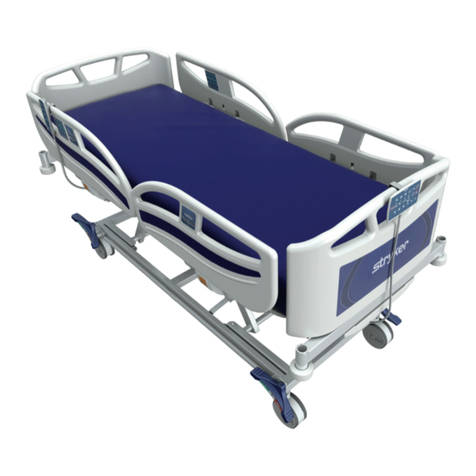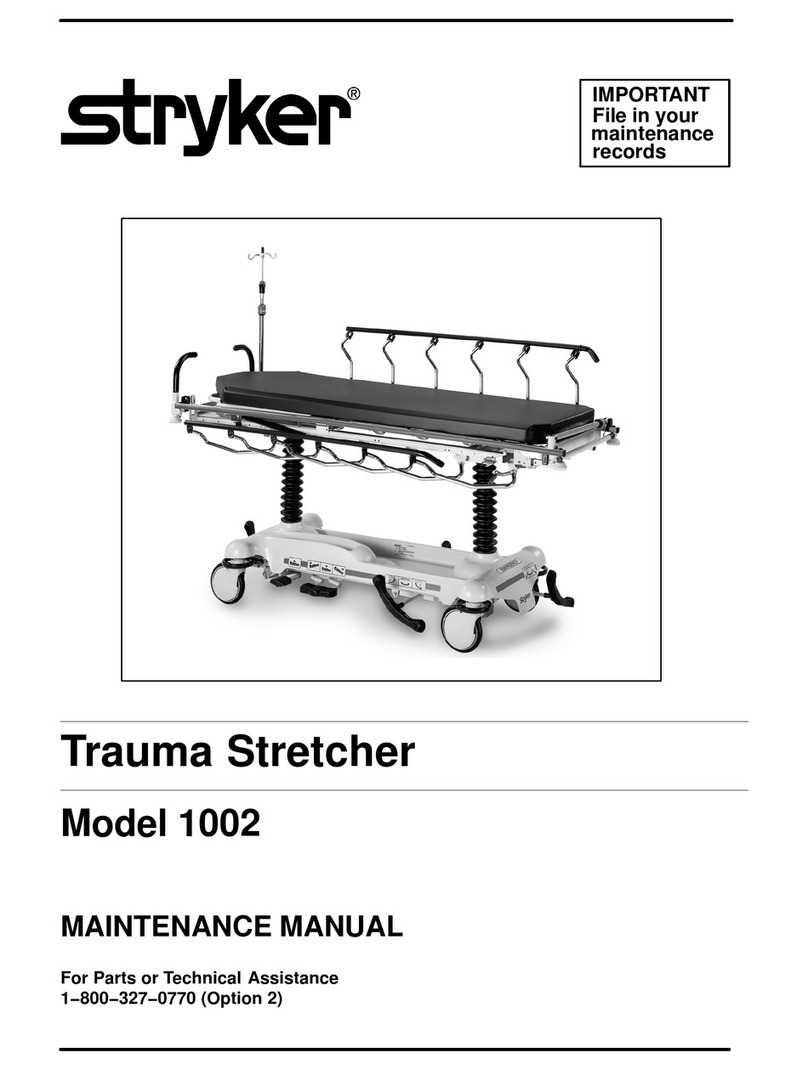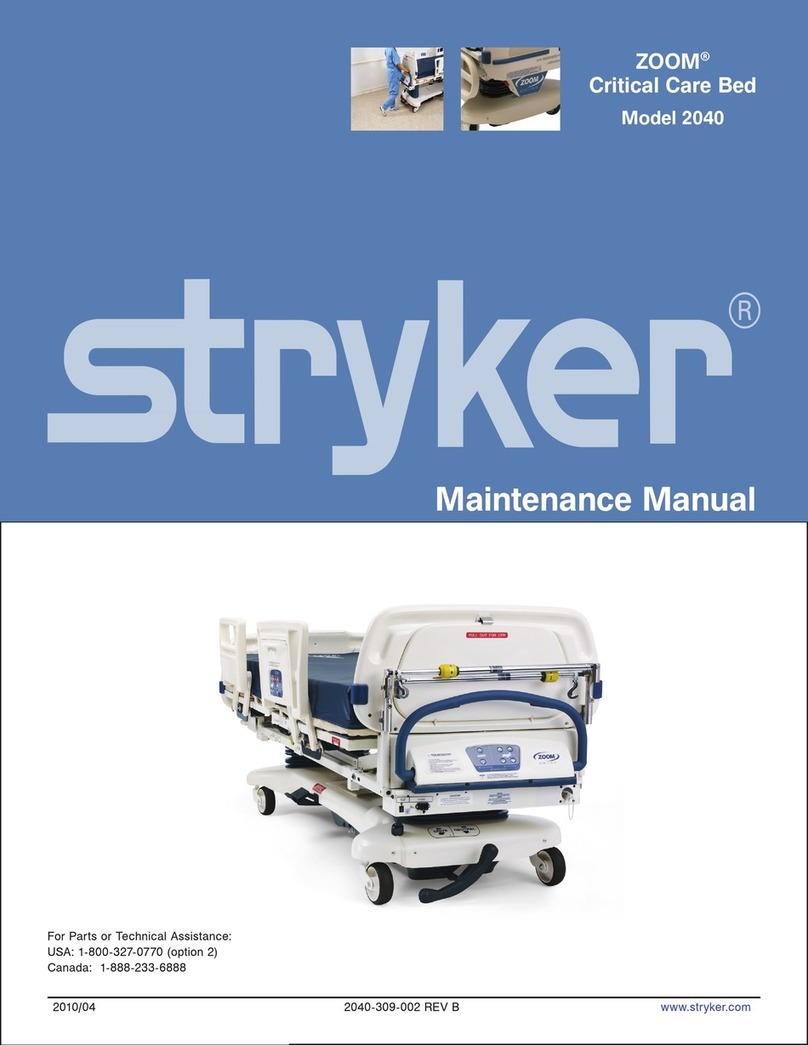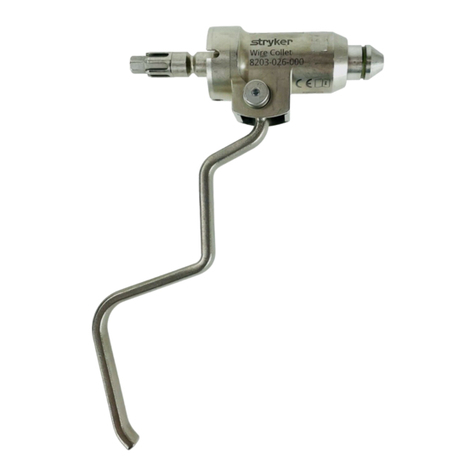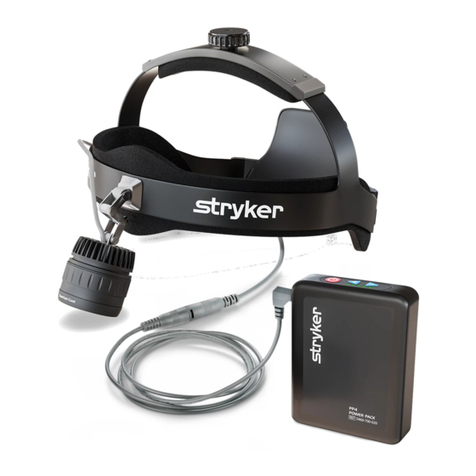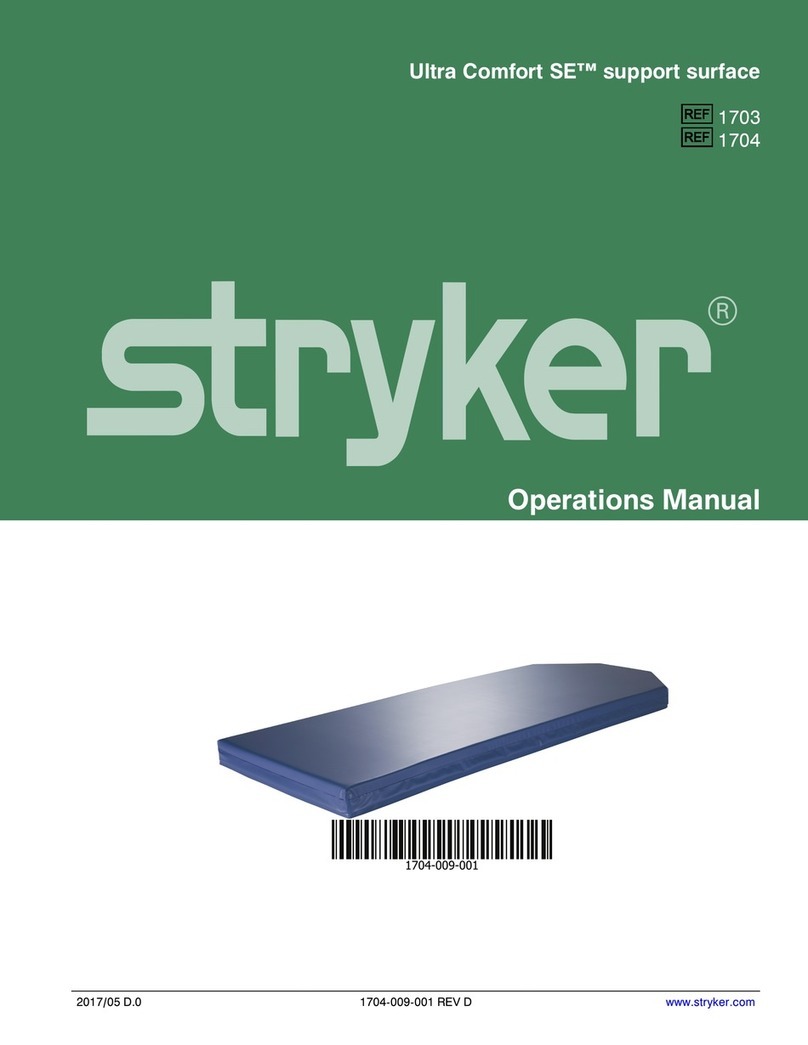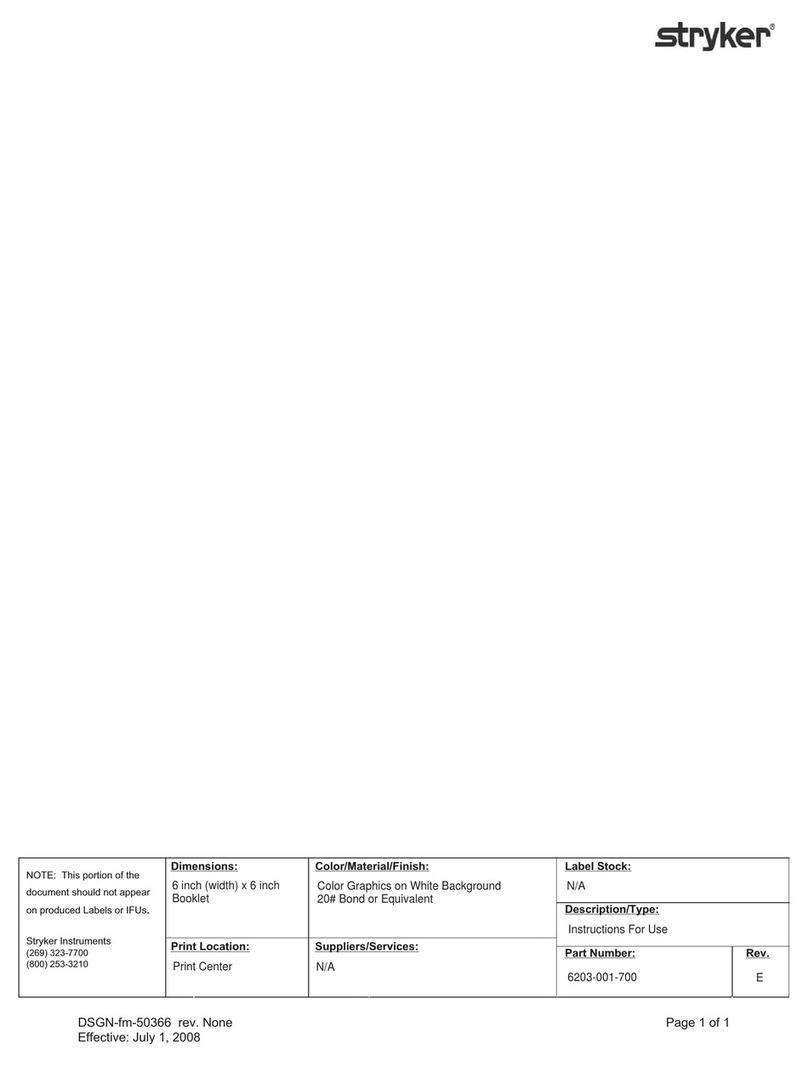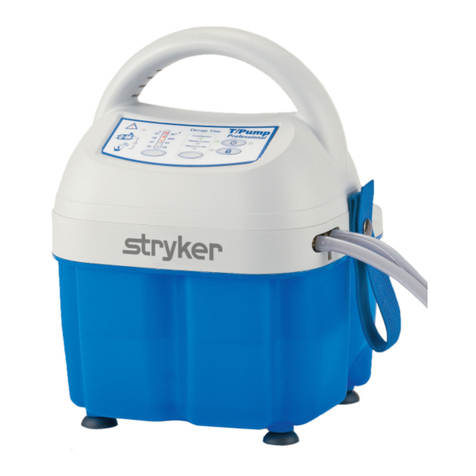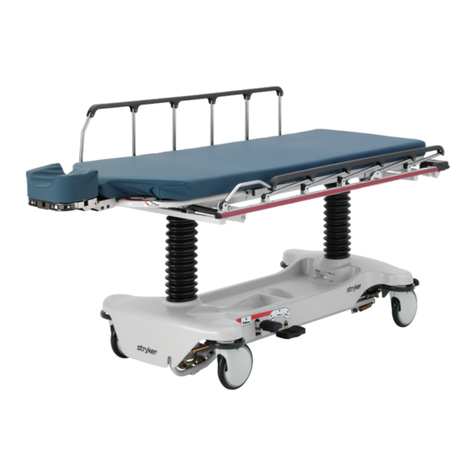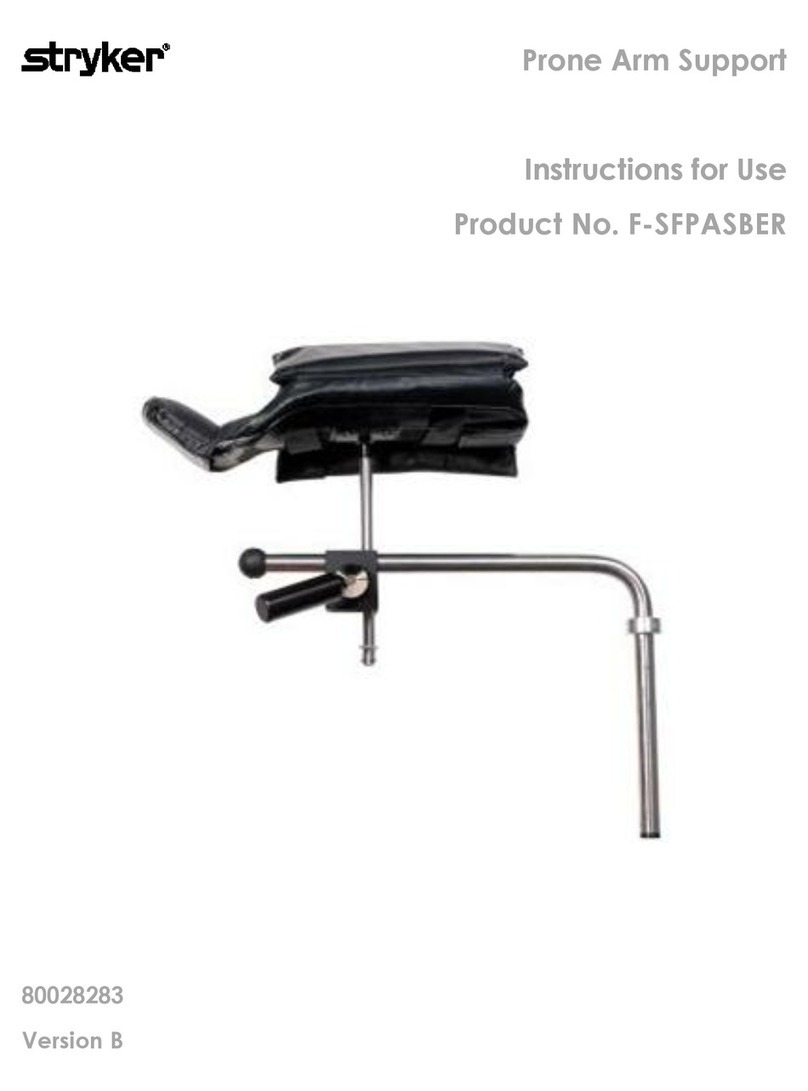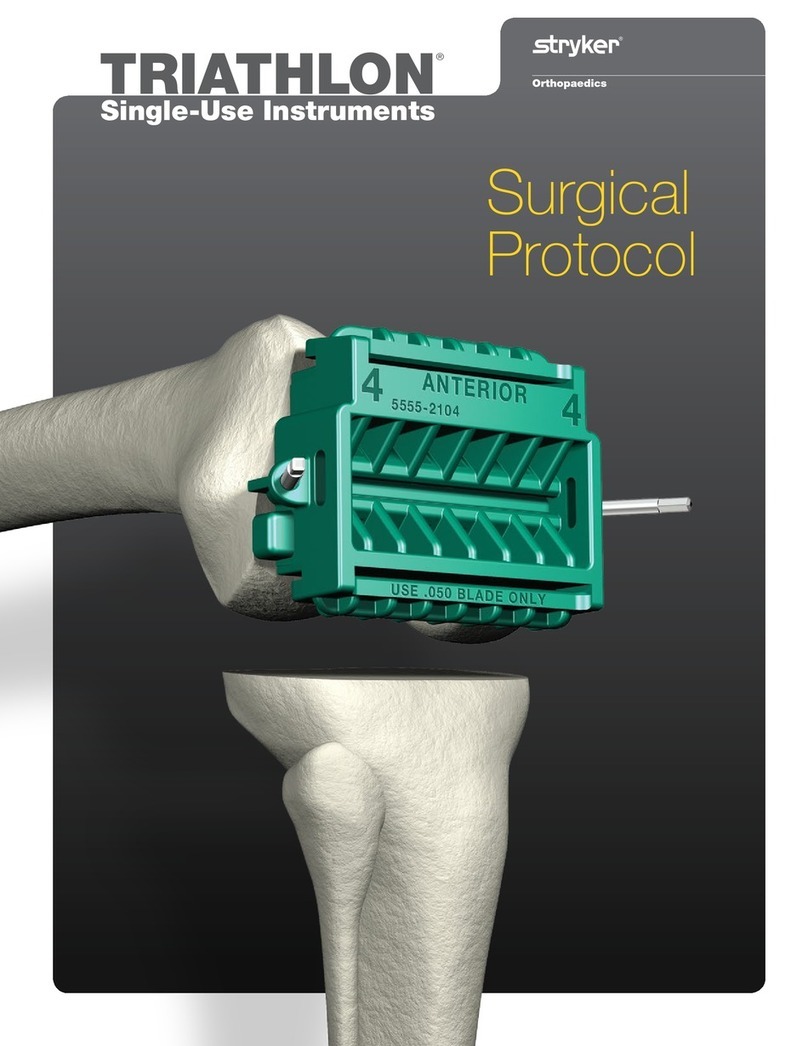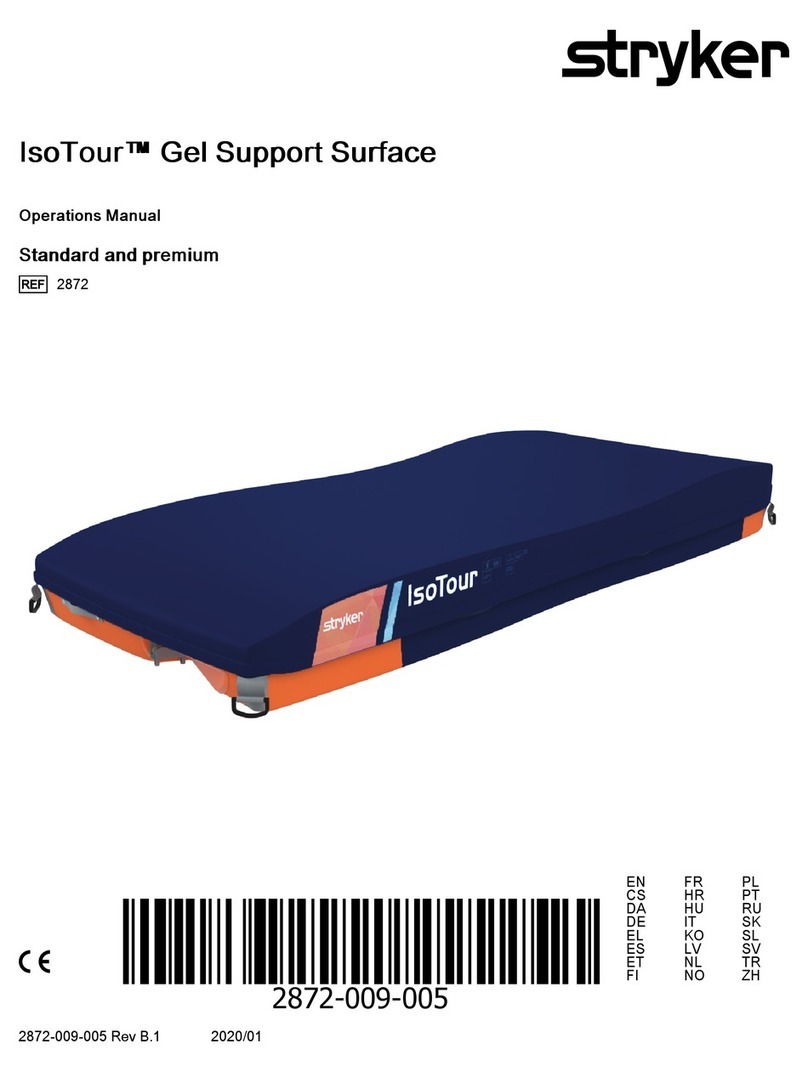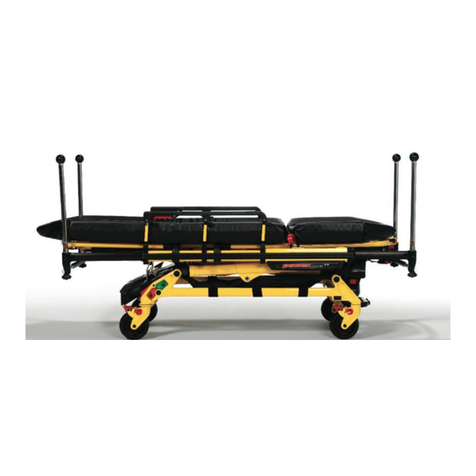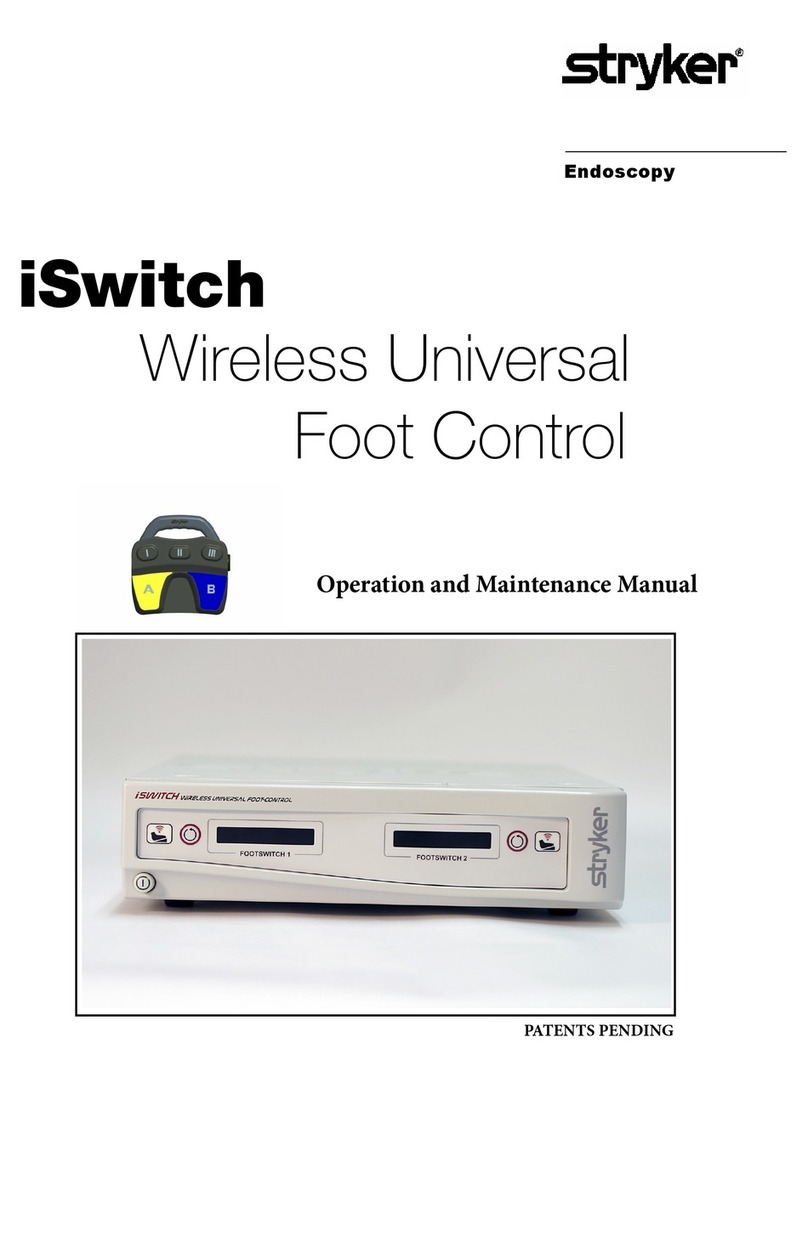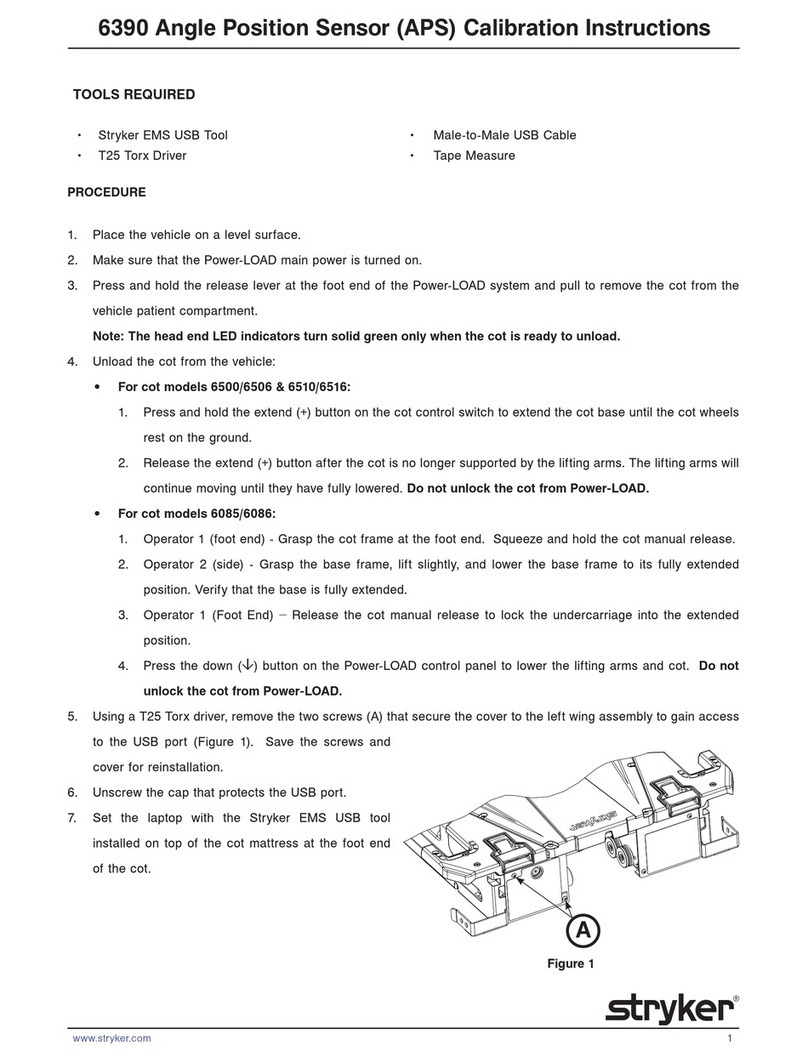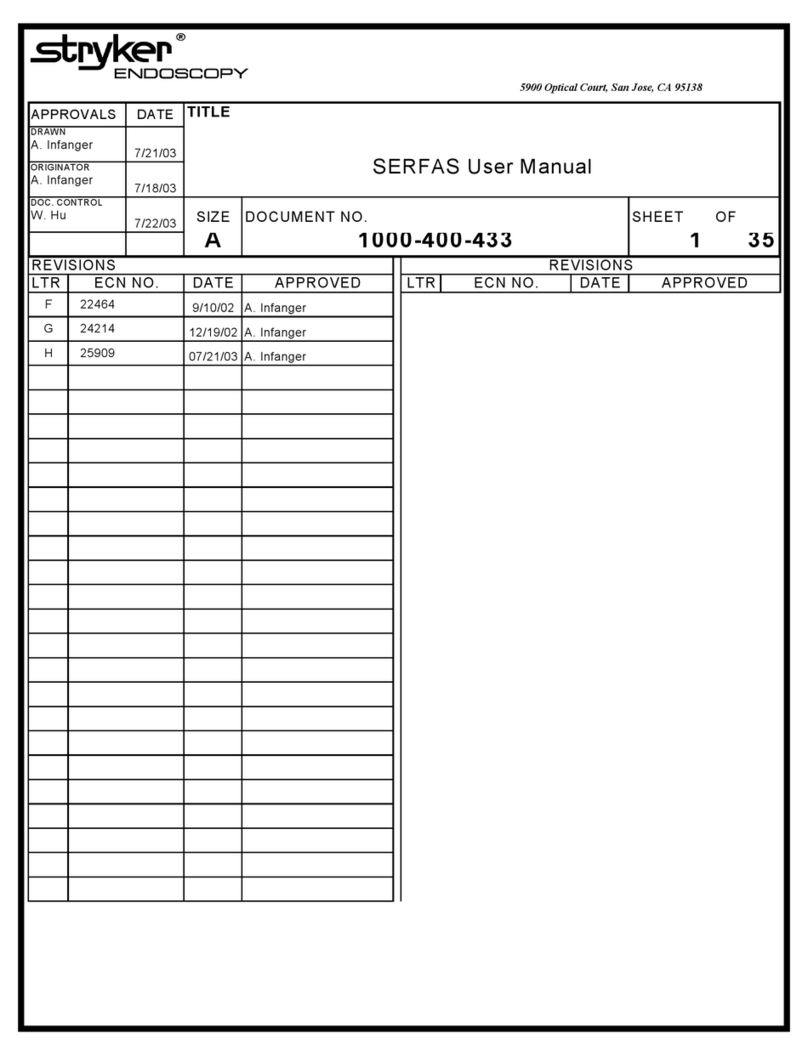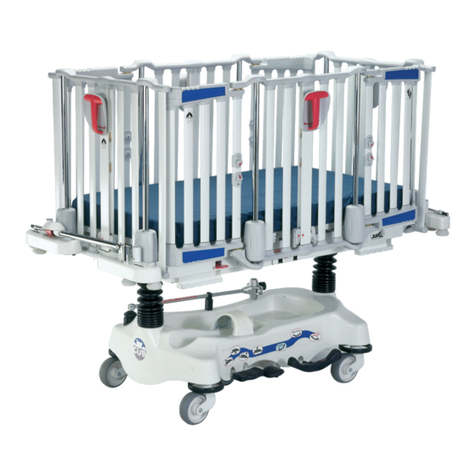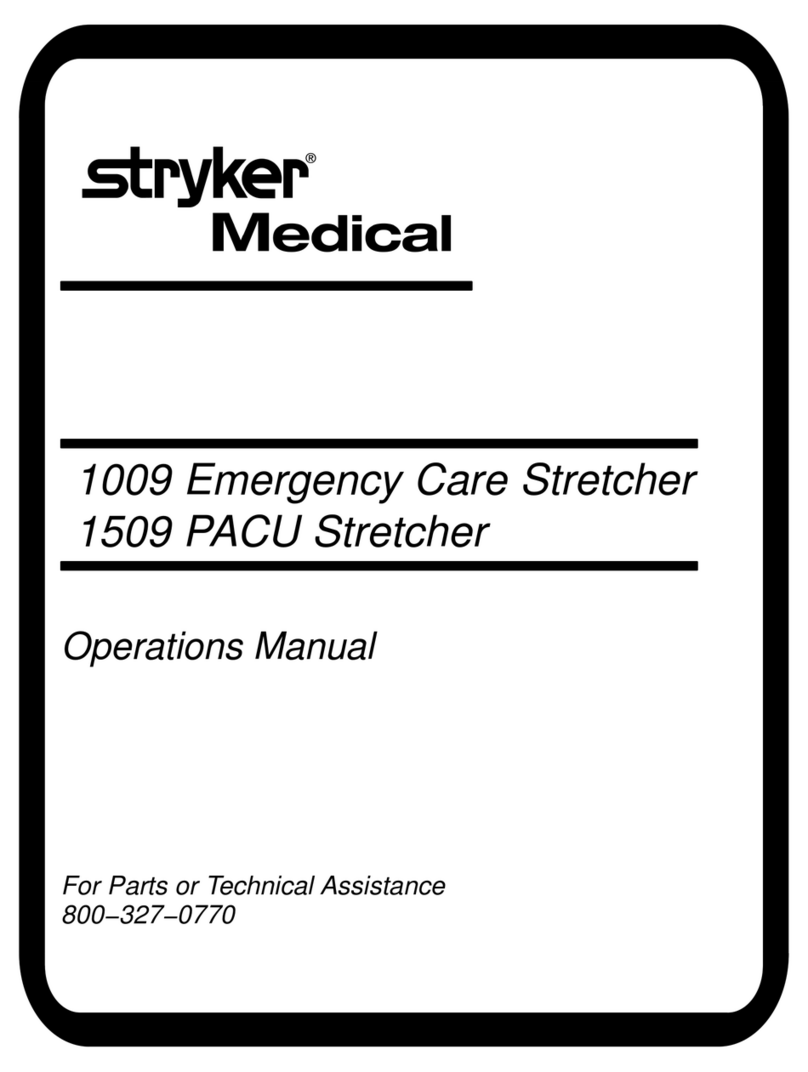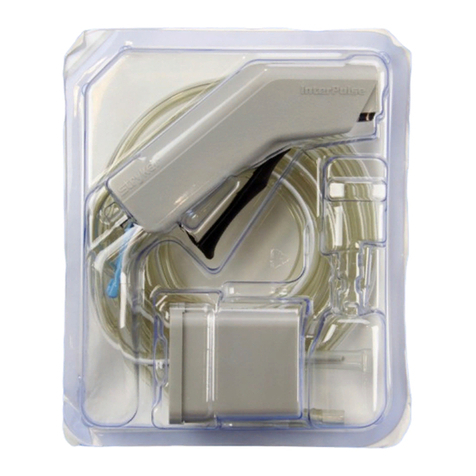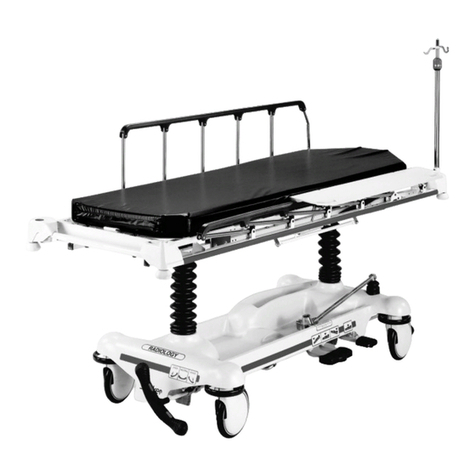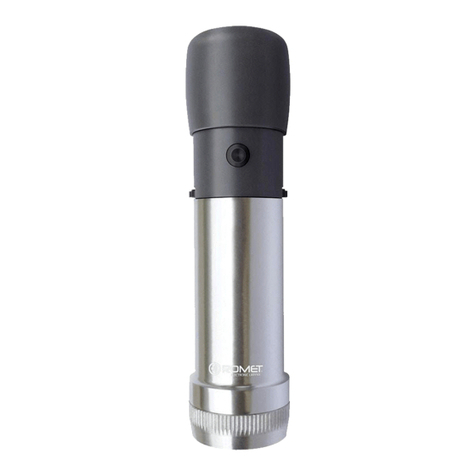
English
EN
www.stryker.com 2860-109-005 REV C 1-3
Summary of safety precautions
Always read and strictly follow the warnings and cautions listed on this page. Service only by qualified personnel.
WARNING
• Always check patient’s skin regularly. Consult a physician if erythema or skin breakdown occurs. Serious injury
could result if the patient’s skin condition is left untreated.
• Always use extra caution and supervision to help reduce the risk of a patient fall. Patient stability and siderail
coverage may be compromised with the use of an overlay.
• Always leave the bed frame in the lowest position when the patient is unattended to help reduce the number and
severity of falls.
• Always consider the use of siderails. The safe use of the support surface is maximized when used in conjunction
with siderails and there may be an increased risk of falls when siderails are not present. Serious injury or death can
result from the use (potential entrapment) or non-use (potential patient falls) of siderails or other restraints.
Consider local policies regarding the use of siderails. The physician, operator, or responsible parties should
determine whether and how to use siderails based on each patient’s individual needs.
• Always use extra caution with a patient at risk of a fall (such as agitated or confused) to help reduce the likelihood
of a fall.
• Always use extra caution when reading radiology images taken of a patient on this support surface as internal
components can cause artifacts and distort readings.
• Always install the IsoFlex LAL support surface on Stryker bed frames. See compatible frames in the specification
table. This is to avoid the risk of a safety hazard including but not limited to bodily injury.
• Do not use the support surface when gaps are present. The risk of entrapment can develop when the support
surface is placed on bed frames that leave gaps of even a few inches. between the support surface and the
headboard, footboard, and siderails.
• Do not stick needles into a support surface through the support surface cover. Holes may allow body fluids to enter
the inside (inner core) of the support surface and could cause cross-contamination, product damage, or product
malfunction.
• Always evaluate the appropriate CPR protocol to use with this product.
• Always be aware of devices or equipment that are placed on the top of the support surface. Damage to the surface
may occur due to the weight of the equipment, heat generated by the equipment, or sharp edges on the equipment.
• Do not use the support surface as a transfer device.
• Do not use the support surface handles to lift or move the support surface with a patient on board.
• Do not transfer patient from one bed to another using the support surface with a patient on it.
• Do not exceed the safe working load of the hospital bed frame when supporting both the patient and the support
surface. Excess weight could cause unpredictable safety and performance of this product.
• Always make sure that the patient support platforms and their respective transfer gaps are adequate to support the
patient. If the space between the two patient support platforms is greater than 3 in. (7,62 cm), use the transfer
bridge to fill the gap. The transfer bridge is meant to ease transfer of a patient from one patient support platform to
another.
• Always make sure that the opposite siderail is raised when placing a patient on the support surface to reduce the
risk of patient fall.
• Always monitor the patient condition at regular intervals for patient safety.
• Do not immerse the support surface in cleaning or disinfectant solutions.
• Always inspect support surface covers (top and bottom) for tears, punctures, excessive wear, and misaligned
zippers each time the covers are cleaned. If compromised immediately remove the support surface covers from
service and replace the covers to prevent cross-contamination.
• Do not iron, dry-clean, or tumble dry the support surface covers.
• Always disinfect the support surface between patients to avoid the risk of cross-contamination and infection.
